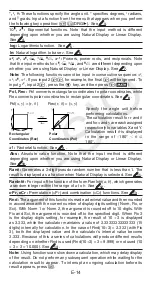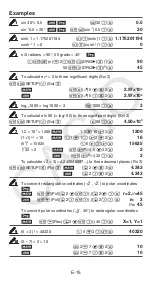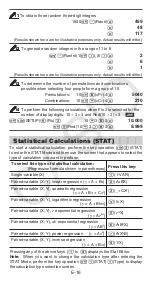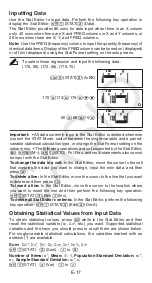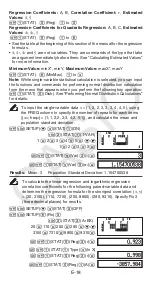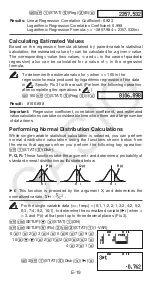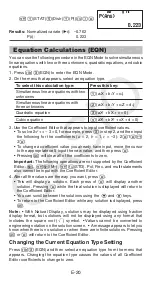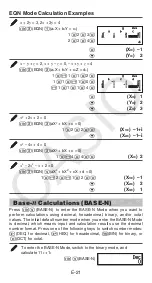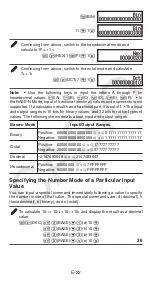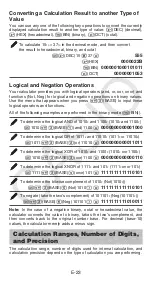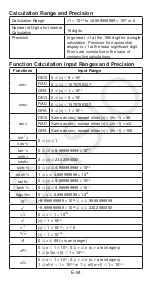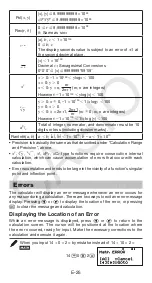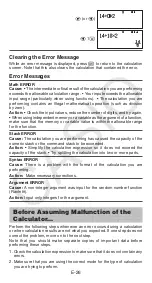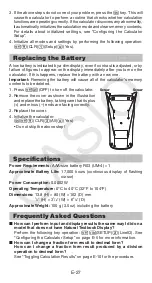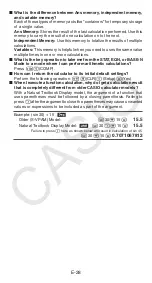
E-28
k
What is the difference between Ans memory, independent memory,
and variable memory?
Each of these types of memory acts like “containers” for temporary storage
of a single value.
Ans
Memory:
Stores the result of the last calculation performed. Use this
memory to carry the result of one calculation on to the next.
Independent
Memory:
Use this memory to totalize the results of multiple
calculations.
Variables:
This memory is helpful when you need to uses the same value
multiple times in one or more calculations.
k
What is the key operation to take me from the STAT, EQN, or BASE-N
Mode to a mode where I can perform arithmetic calculations?
Press
N
1
(COMP).
k
How can I return the calculator to its initial default settings?
Perform the following operation:
1
9
(CLR)
1
(Setup)
=
(Yes)
k
When I execute a function calculation, why do I get a calculation result
that is completely different from older CASIO calculator models?
With a Natural Textbook Display model, the argument of a function that
uses parentheses must be followed by a closing parenthesis. Failing to
press
)
after the argument to close the parentheses may cause unwanted
values or expressions to be included as part of the argument.
Example: (sin 30) + 15
v
Older (S-VPAM) Model:
s
30
+
15
=
15.5
Natural Textbook Display Model:
b
s
30
)+
15
=
15.5
Failure to press
)
here as shown below will result in calculation of sin 45.
s
30
+
15
=
0.7071067812

